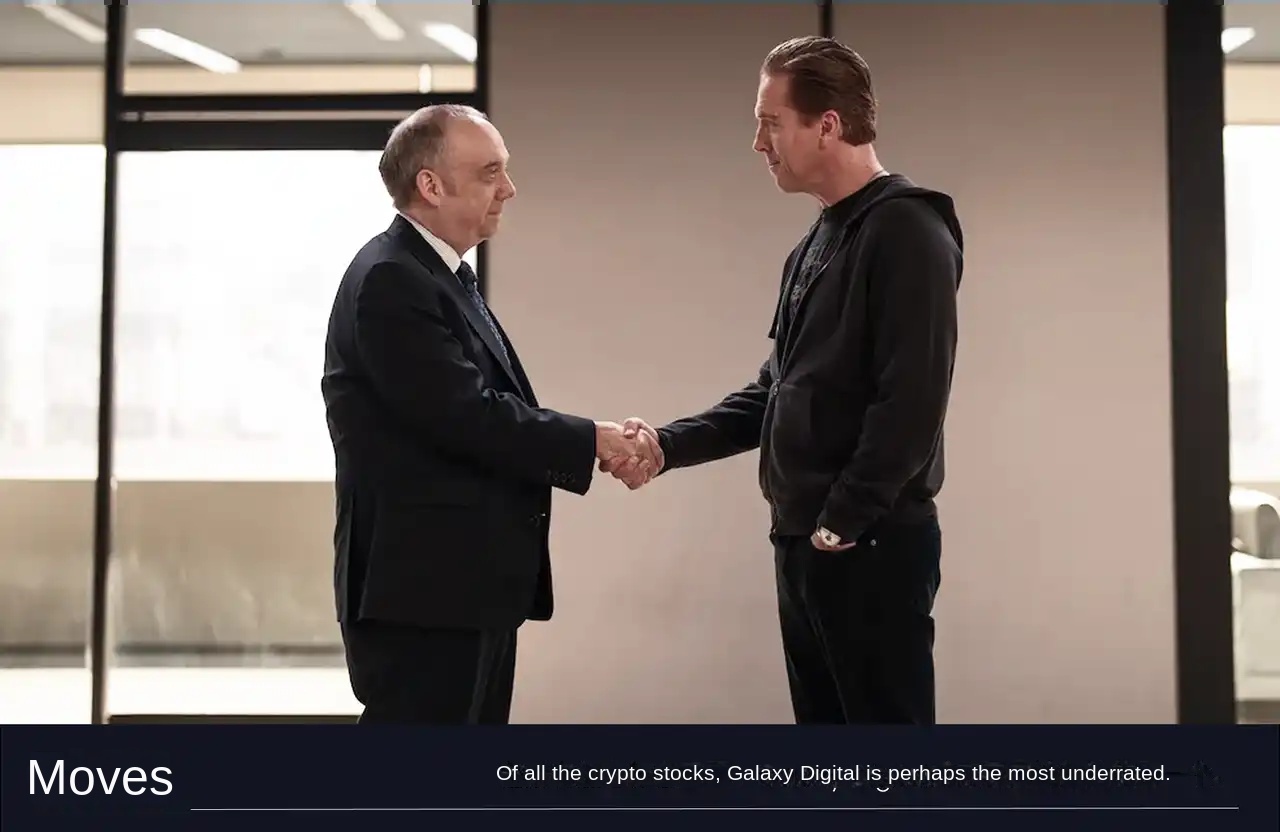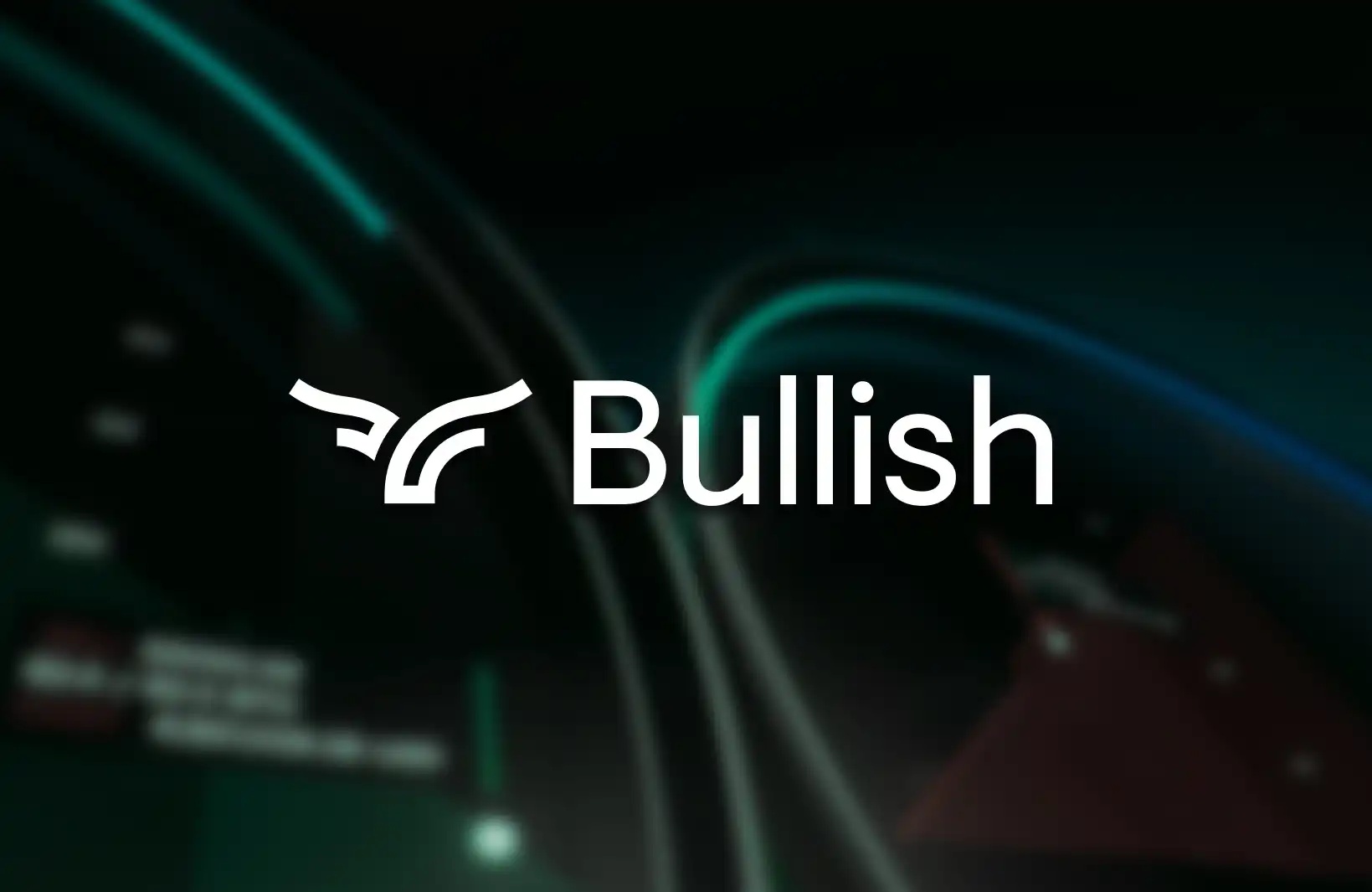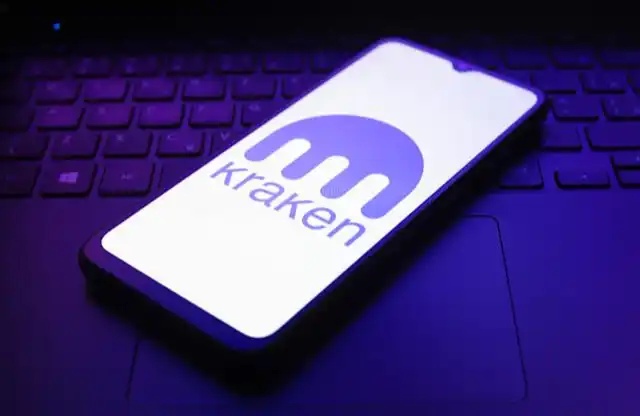Kraken's Awakening: The Night Before IPO, What Is It Up To?
Original Title: "Eve of IPO, Kraken Awakens"
Original Authors: Yanz, Liam, Deep Tide TechFlow
In July 2025, the crypto market once again ignited the flame of a bull market.
Unlike previous bull markets, in this cycle, crypto assets such as Bitcoin became deeply integrated with the US stock market. Just as everyone turned their attention to Robinhood's tokenization of stocks, a long-established exchange, which had been silent for many years, quietly began to open the doors to the capital market.
This exchange is called Kraken.
It was once known as the "big brother of the crypto world," secure, robust, but has long been hidden in the shadow of giants like Coinbase and Binance. In the Chinese community, it has long been labeled as a "secure fiat withdrawal channel," and was once so low-key that it was almost forgotten.
Now, things have changed.
In the Kaiko Global Spot Exchange Comprehensive Rating for the second quarter of 2025, Kraken scored 89 points, ranking second only to Coinbase; its quarterly revenue grew by 18% year-on-year, with a trading volume of $186.8 billion; it launched the Layer2 network Ink, the stock tokenization platform xStocks, acquired NinjaTrader ... The long-dormant Kraken suddenly resurfaced, causing a stir on Wall Street.
At the end of July, Kraken, valued at $15 billion, prepared for its final round of financing in preparation for an IPO in 2026.
From the "honest person in the geek community" to the "next crypto unicorn," there was a long-lasting internal struggle in between. The story of Kraken is a transformational history that spans 14 years.
From Card Merchant to Exchange Founder
In the 1990s, Jesse Powell was just a teenager obsessed with "Magic: The Gathering."
Unlike other players passionate about battles, he excelled at finding arbitrage opportunities in the card market—this was when he first realized: "Anything of value can be priced, traded."
After the turn of the millennium, Powell worked in tech support at an internet service provider. The online game "Ultima Online" became popular in the office.
This was the first large-scale online game with elements of real-money transactions, where a virtual castle could be sold for thousands of dollars. The exchange of virtual items for real money led Powell to see the embryonic form of "asset digitization in reality."
Soon after, he became obsessed with "Diablo 2." Initially, he was just grinding monsters and selling equipment, with an average player earning $25 per hour already considered good. However, Powell quickly discovered a more efficient arbitrage method: exchanging $5 in-game gold for rare items, then selling them on eBay for $30, achieving a 6x return on each transaction. This side hustle later expanded to over 20 games, evolving into a small virtual currency trading empire.
Powell later referred to this experience as the "overture to cryptocurrency."
In 2010, Bitcoin entered the scene.
Initially, Powell thought it was just another "World of Warcraft gold." But soon he realized that Bitcoin solved the core challenges of virtual currency transactions—refund disputes, delivery difficulties, expensive cross-border payments... The decentralization and low-cost transactions of Bitcoin made Powell realize: "This can not only change the virtual gaming economy but even reshape the financial system in the real world."
Within a year, he transformed from a virtual game currency merchant to a Bitcoin enthusiast.
In 2011, a friend he met playing "Magic: The Gathering" invited him to visit the then-largest Bitcoin exchange Mt. Gox office. Rather than a visit, it was more of a dedicated trip to solve problems.
During that visit, the notorious hack of 880,000 bitcoins occurred. Powell spent about a week and a half helping Mt. Gox resume operations, and it was at that time that he vividly saw the enormous risks in the crypto world:
"For cryptocurrency to go mainstream, it needs a more serious player—a secure, compliant, regulatory-friendly, and trusted exchange."
That same year, Jesse Powell and technical partner Thanh Luu formally established Kraken in San Francisco.
Unlike other entrepreneurs chasing speed, Powell spent an entire year building a security team, undergoing third-party audits, and pioneering two-factor authentication (2FA), becoming one of the first exchanges to publicly demonstrate security capabilities.
Over the following decade, Kraken remained on the path of slow-paced expansion.
In 2013, it became one of the first overseas exchanges to obtain a license from the Japanese Financial Services Agency. In 2014, it assisted in handling the asset liquidation of Mt. Gox's collapse, further establishing its reputation for compliance and security. By 2020, it had expanded its operations to over 200 countries and regions, obtained licenses in multiple countries such as the United States, Canada, the United Kingdom, Japan, and Australia, becoming one of the most comprehensive compliant exchanges globally.
The solid groundwork for expansion has been laid, and Kraken is only one opportunity away from a transformation.
The Transformation of an Established Exchange
For a long time, Kraken has been labeled as "established, secure, low-key," but behind this label lies "traditional, outdated."
In the Chinese crypto community, it has long been associated with the ability to quickly trade stablecoins like USDT for fiat currencies such as USD and EUR, earning the label "secure cash-out channel." In the public eye, it resembles a traditional bank: reliable but lacking a distinctive brand and has never led the narrative.
In contrast, Coinbase, also based in the U.S., is like the "Apple" of the crypto world—glamorous, user-friendly, and omnipresent.
It excels in marketing, from Coinbase Learn educational content to a 2022 Super Bowl ad, NBA partnerships, esports team sponsorships, and celebrity endorsements, gradually becoming synonymous with cryptocurrency assets in the minds of Americans.
In comparison, Kraken's first thirteen years were more like a tech geek's self-cultivation, akin to "Linux"—powerful, professional, but living in the geek community for an extended period.
Social media data might highlight the difference: while Coinbase boasts 6.5 million followers, Kraken hovers around 1.6 million.

However, everything changed dramatically in 2025.
Kraken frequently made headlines, shedding its honest, low-profile image for a vibrant, action-oriented crypto powerhouse:
· Stock Tokenization (xStocks): Through a partnership with Backed Finance, it launched tokenized stock and ETF trading on the blockchain, covering 60+ U.S. stock assets like Apple, Tesla, Nvidia, etc.
· Traditional Financial M&A: Acquired retail futures platform NinjaTrader for $1.5 billion to expand derivatives and futures trading.
· Stablecoin Ecosystem: Strategically invested in stablecoin issuer StablR to promote the global applications of EURR and USDR.
· Layer 2 Ecosystem Ink: Building its own blockchain network to establish on-chain financial infrastructure.
· Institutional Services: Kraken Institutional provides full-stack digital asset services to hedge funds and ETF issuers.
The transformation on the marketing front came earlier. Starting in 2023, Kraken also began to address its branding weaknesses.
From 2023 to 2025, Kraken hitched a ride on the last train by sponsoring the Williams Racing F1 team, enhancing its brand influence, and subsequently launching Grid Pass digital collectibles (NFTs), attracting attention from high-net-worth individuals through global live broadcasts of racing events.

In 2024, Kraken successively reached shirt sponsorship agreements with the English Premier League's Tottenham Hotspur, La Liga's Atletico Madrid, and Bundesliga's RB Leipzig, placing the Kraken logo in global sports broadcast images.
The awakening of the Kraken brand and business is only superficial; the fundamental change lies in crisis.
In 2022, Kraken experienced a management crisis.
The then CEO and co-founder Jesse Powell's strong libertarian cultural beliefs clashed with the team's values, causing internal dissatisfaction and team turmoil. Former CMO Matt Mason, who joined in 2020, abruptly resigned in February 2020, leaving the position vacant for a staggering 2 years; the product head changed three times in four years; since 2021, the Chief Business Officer position has been vacant, eventually being directly abolished...
Ongoing vacancies in top management and team division led founder Powell to step down as CEO in 2022 and assume the role of board chairman.
This change was not only a transfer of power but also a profound reflection on the company's culture.
From then on, Kraken embarked on a journey of transformation.
That same year, Mayur Gupta joined as CMO, using global brand marketing for the first time to reshape Kraken's image, with sports sponsorships, NFT collections, and content-driven communication allowing this "tech-savvy exchange" to engage with the Z generation for the first time.
The series of marketing strategies he led later received market recognition, with Business Insider naming him one of the "Most Innovative CMOs of 2024."
A more significant business change occurred at the end of 2024 when Arjun Sethi, Co-Founder of Tribe Capital, joined Kraken as Co-CEO.
It is noteworthy that Tribe Capital is Kraken's second-largest institutional investor, and founder Arjun Sethi joined Kraken's board in 2020. Externally, this was also seen as a shareholder rescue.
Sethi, a Silicon Valley VC alum, believed that Kraken needed to undergo an identity upgrade, with the key word being "breakout."
Transitioning from a single cryptocurrency exchange to a global digital financial platform.
Under Sethi's leadership, Kraken launched the stock tokenization trading platform xStocks; acquired NinjaTrader to expand into derivatives and futures trading...
Sethi stated, "We are more open to further acquisitions in the future."
The Co-CEO believes that one new area with "tremendous potential" for digital assets is corporate treasury management, with "many public and private companies exploring holding cryptocurrency."
Today, Kraken has emerged from its past internal strife and is no longer the silent sea monster it once was. It now has a new voice, a new brand, a new story.
It is no longer content to be just a secure harbor for cryptocurrencies but aims to build a bridge between crypto assets and traditional finance, even becoming a key player in the global asset tokenization wave.
This veteran exchange with 14 years of history is now charging toward the IPO stage in a fresh guise.
Heading Towards IPO
By the end of July 2025, according to The Information, Kraken is reportedly raising $5 billion in new funding at a valuation of $150 billion, a 36% increase from the approximately $110 billion valuation in 2022.
Based on data from the secondary market trading platform Forge, Kraken's stock price has more than doubled in the past year, with the current valuation surpassing $100 billion.

This funding round is widely seen in the industry as the final sprint before the IPO, with Kraken expected to go public as early as the first quarter of 2026.
For Kraken, this marks a prime policy window.
In March 2025, the U.S. SEC dismissed the securities violation lawsuit against Kraken; in June of the same year, Kraken obtained the European Union's Markets in Crypto Assets (MiCA) license, enabling full compliance operations in the EU.
All of this is attributed to Trump's friendly policies towards the crypto industry and Kraken's founder's early bet on Trump.
In June 2024, Kraken co-founder Jesse Powell personally donated $1 million worth of crypto assets to Trump, most of which were in ETH. Following Trump's launch of the meme coin TRUMP, Kraken became the first U.S. cryptocurrency exchange to list the TRUMP token.
In addition to policy support, Kraken has also demonstrated strong momentum in business operations and financial data.
From a business perspective, Kraken's revenue structure is diverse and continues to expand, mainly including trading fees, Staking rewards, leverage and derivatives services, as well as asset custody, OTC matching, and institutional customized tools, with trading fees being the core.
In 2024, Kraken achieved $15 billion in revenue. In the first half of 2025, it reported quarterly revenues of $4.72 billion and $4.12 billion, with year-over-year growth of 19% and 18%, respectively. Adjusted EBITDA reached $187 million and $80 million, respectively.
In the second quarter of 2025, Kraken's total trading volume reached $1.868 trillion, a year-over-year increase of 19%; platform assets under management reached $432 billion, a year-over-year increase of 47%; the total number of clients exceeded 15 million, supporting 200+ digital assets and 6 fiat currencies.
Compared to Coinbase, Kraken's current daily trading volume is around $1.37 billion, approximately half of Coinbase's volume. However, Kraken is charting an independent path through a differentiated business narrative.
Foremost among these differences is stock tokenization.
Kraken is one of the biggest proponents of stock tokenization. On the xStocks platform launched in partnership with Backed Finance, over 60 stock tokens, including Apple, Tesla, and Nvidia, have been listed, opening up a new gateway for non-US investors to purchase shares of US-listed companies, tradable 24/7. Users can also use xStocks for DeFi collateral, liquidity pools, and smart contract calls, achievements that traditional securities trading cannot reach.
The future Kraken may transcend its identity as a mere exchange and evolve into a 'Kraken Bank'.
As early as September 2020, Kraken became the first digital asset company in the US to obtain a Special Purpose Depository Institution (SPDI) banking charter in Wyoming. This means that Kraken can offer digital asset custody, USD deposit accounts, and 24/7 settlement services similar to traditional banks, albeit with a full-reserve requirement to avoid the risks associated with fractional reserves.
In the future, Kraken plans to introduce a wider range of financial products, including debit cards for institutions and individuals, a mobile banking product integrated with crypto wallets, wealth management, and payment solutions.
In its official announcement, the idea of building a bridge between the future crypto economy and the existing financial system remains central. Everything echoes Jesse's recollection of the founding statement of Kraken:
To bring cryptocurrency to the mainstream market, a truly serious player is needed—a player that can operate robustly, cooperate with regulatory and law enforcement agencies, explain cryptocurrency to banks, and build a bridge from the traditional system to the crypto world.
Welcome to join the official BlockBeats community:
Telegram Subscription Group: https://t.me/theblockbeats
Telegram Discussion Group: https://t.me/BlockBeats_App
Official Twitter Account: https://twitter.com/BlockBeatsAsia
 Forum
Forum

 Finance
Finance
 Specials
Specials
 On-chain Eco
On-chain Eco
 Entry
Entry
 Podcasts
Podcasts
 Activities
Activities
 OPRR
OPRR









